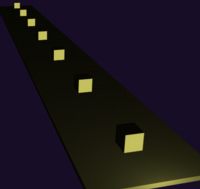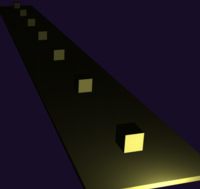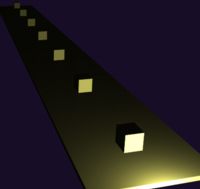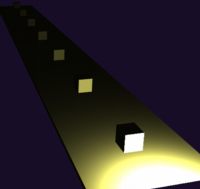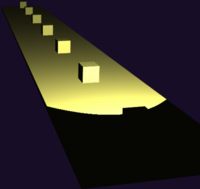TAPESTRY: The Art of Representation and Abstraction
Lighting: Falloff
How intensity changes over distanceWhat's it all about?
A candle across the room illuminates your book less well than a candle at your shoulder. The decline in illumination with distance is called falloff or attenuation and in a physics class you would learn that (for a point light) illumination (like gravity) declines in proportion to 1/r_squared, so if you double the distance, you get 1/4 the illumination.
Computer graphics programmers weren't entirely happy with the visual results achieved doing it "right" so they tried various alternatives. Most software offers you at least the choices explored here: no falloff, inverse-linear (1/r) falloff, and inverse-quadratic (1/r_squared) falloff.
The following images explore some of the results you might obtain by experimenting with the "Falloff" parameter of point and cone lights. These images were done with just one light source, point or a cone, as indicated, set at 100% simple illumination, with a minimum (3%) ambient light level. A set of boxes is distributed at 14' intervals along a 100' strip of material, with the light source at one end.
Last updated: April, 2014

